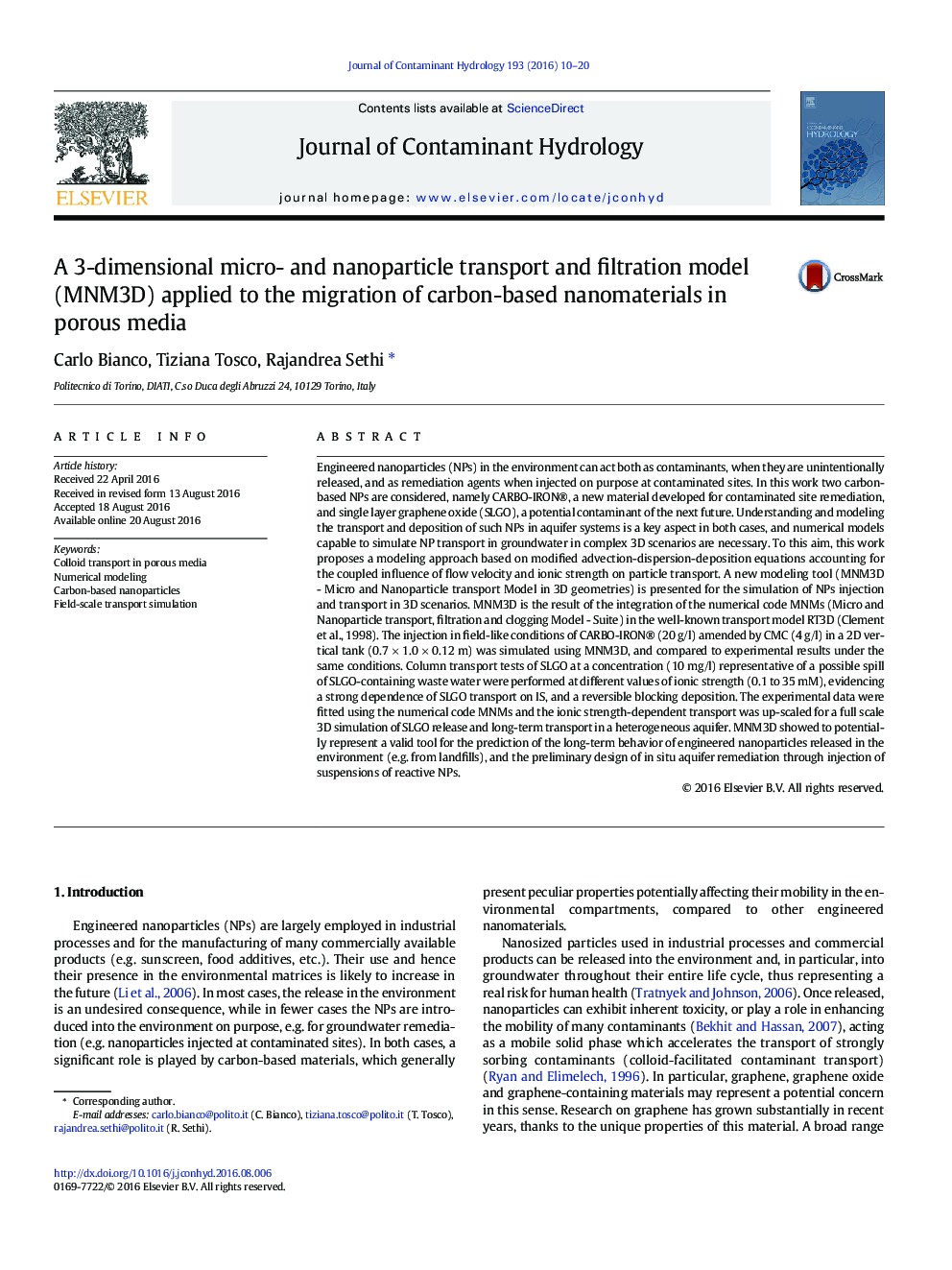| Article ID | Journal | Published Year | Pages | File Type |
|---|---|---|---|---|
| 4546328 | Journal of Contaminant Hydrology | 2016 | 11 Pages |
•Deposition of graphene oxide nanoparticles is controlled by ionic strength.•MNM3D simulates 3D transport of carbon-based NPs in porous media.•Ionic strength changes significantly affect NP transport at field scale.
Engineered nanoparticles (NPs) in the environment can act both as contaminants, when they are unintentionally released, and as remediation agents when injected on purpose at contaminated sites. In this work two carbon-based NPs are considered, namely CARBO-IRON®, a new material developed for contaminated site remediation, and single layer graphene oxide (SLGO), a potential contaminant of the next future. Understanding and modeling the transport and deposition of such NPs in aquifer systems is a key aspect in both cases, and numerical models capable to simulate NP transport in groundwater in complex 3D scenarios are necessary. To this aim, this work proposes a modeling approach based on modified advection-dispersion-deposition equations accounting for the coupled influence of flow velocity and ionic strength on particle transport. A new modeling tool (MNM3D - Micro and Nanoparticle transport Model in 3D geometries) is presented for the simulation of NPs injection and transport in 3D scenarios. MNM3D is the result of the integration of the numerical code MNMs (Micro and Nanoparticle transport, filtration and clogging Model - Suite) in the well-known transport model RT3D (Clement et al., 1998). The injection in field-like conditions of CARBO-IRON® (20 g/l) amended by CMC (4 g/l) in a 2D vertical tank (0.7 × 1.0 × 0.12 m) was simulated using MNM3D, and compared to experimental results under the same conditions. Column transport tests of SLGO at a concentration (10 mg/l) representative of a possible spill of SLGO-containing waste water were performed at different values of ionic strength (0.1 to 35 mM), evidencing a strong dependence of SLGO transport on IS, and a reversible blocking deposition. The experimental data were fitted using the numerical code MNMs and the ionic strength-dependent transport was up-scaled for a full scale 3D simulation of SLGO release and long-term transport in a heterogeneous aquifer. MNM3D showed to potentially represent a valid tool for the prediction of the long-term behavior of engineered nanoparticles released in the environment (e.g. from landfills), and the preliminary design of in situ aquifer remediation through injection of suspensions of reactive NPs.
